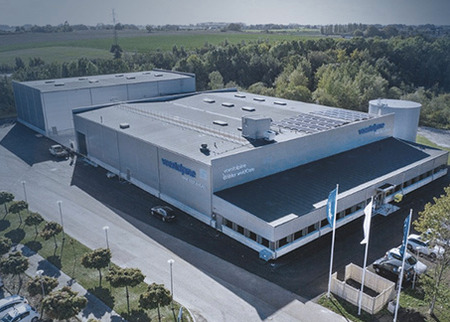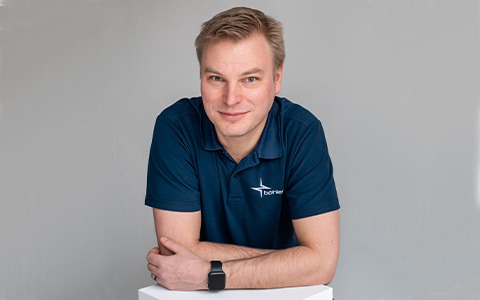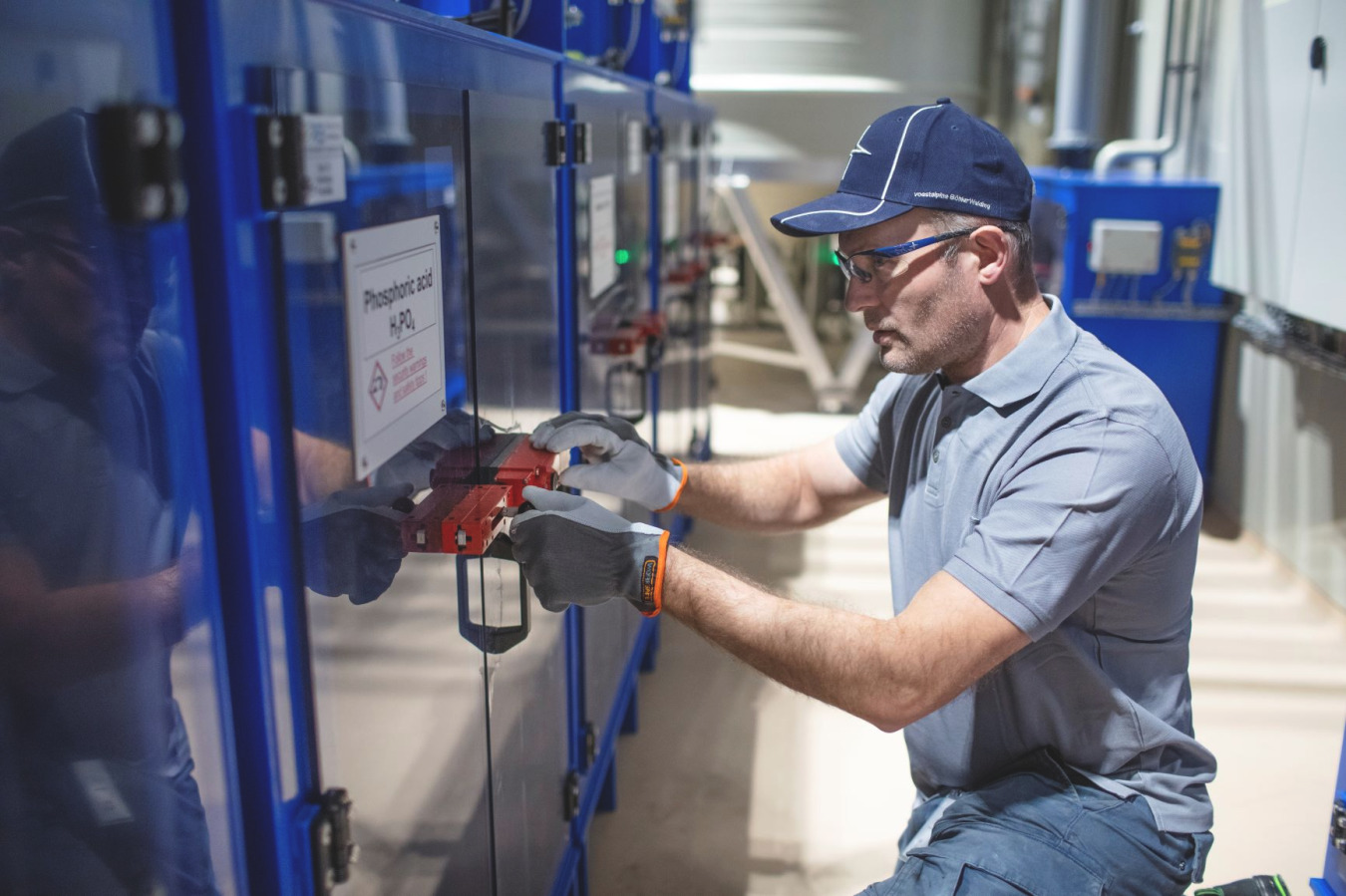To gain more insight into the entire project of building a new factory and moving to production automation, we interviewed André Fasth, CEO of our production in Malmö. He gives an overview of the challenges, the construction process and the critical factors in completing the project.
Our journey to a fully automated, environmentally friendly and safe chemical plant

voestalpine Böhler weldCare AB has been manufacturing surface treatment products for stainless steel in Malmö for more than 40 years. There was a great need for a new, future-proof facility. Read more about our new CO2 neutral factory.
Surface treatment products have been manufactured in Malmö at various addresses for 40 years. For the past 25 years, production has taken place in the port of Malmö, but the capacity of the plant has not been able to meet global demand for several years now.
The raw materials used in the production of surface treatment products are concentrated chemicals that pose greater risks during production than during the final use of the products. If the raw materials are not handled correctly, there can be problems for both people and the environment.

This places extremely high demands on the equipment, and on the processes used. The manufacturing process itself is very complex in terms of process engineering and is not just a matter of "mixing". As the products are intended to be used on stainless steel, the equipment and materials used in production are extremely demanding.
The safest and most environmentally friendly facility in the industry
Global demand continues to grow and we realised that our current production capacity was insufficient and needed to be optimised in several stages. Top management made it clear at an early stage that we would be investing in new production equipment so that we would not only have a much greater production capacity, but also a facility that is one step ahead. We were told to build the safest and most environmentally friendly plant in the world, which would also deliver consistently high quality. We quickly realised that it would not be possible to rebuild the existing factory and that we would have to relocate. After evaluating several existing facilities in different locations, we realised that a new building was the only way to meet our high standards.
It was very important to us to keep the expertise of the staff in Malmö, where the business had been run for the past 40 years. We finally found a suitable location in Fosie, an industrial area in Malmö. The actual manufacturing process was planned in parallel with the search for premises and land.
We enlisted the help of the automation company, Industriprojektbyrån, which we had hired for the old factory. They are familiar with our specific processes and needs and are the right size to see the entire project through. Still, they are not a huge company, which tends to make projects more complicated than they need to be. From the outset, the project team also included our safety and risk consultant, P&B Risk and Fire, along with our environmental consultant, WSP.
The production process
Our goal in adapting for the future first and foremost was to automate in order to achieve world-class process safety and to ensure that the plant had as little impact on the environment as possible. How did it go? Better than expected!
We went into the project with 60 years of experience. We knew that the choice of materials was important. In many cases, the environment associated with the handling of chemicals becomes very corrosive, as in a concrete hall at our customer's site. The materials installation standard we developed at the start of the project had the highest corrosion class for everything from fixing screws and power sockets to wall and floor materials.
We made sure there were safety zones and planned for staff to have the best personal protective equipment on the market to be able to do their job safely and comfortably. In our old plant, people worked every day during several operational stages, in full protective suits with gas masks, etc., to guarantee safety in the working environment. It turned out we were aiming high.
Inherent safety
Before we started designing the details, we sat down and did a proper risk analysis of how we were going to design the new facility. We analysed different scenarios and really thought outside the box. Then we drew up the initial process flow. We checked with equipment suppliers to see what was possible, updated the design accordingly, and then started again from scratch. We updated the risk analysis as we went, until we had a process with as little risk as possible.
It is also important to have early warning systems, such as sensors that give an early warning that something is wrong. These can be anything from advanced gas detection systems to simple leak detectors.
But how has the focus on safety and the environment affected plant efficiency, which is usually the focus of automation? Well, it has actually been much better than originally intended. Mainly because more standardised equipment was able to be used, and partly because it is more efficient to work without cumbersome personal protective equipment.

The human factor
However, there are some things that cannot be dealt with in a mechanical way, and first and foremost, we think of the human factor here. We identified one of the main risks as staff using equipment or processes for which they were not trained or competent to handle.
To address the human factor, we decided to implement an electronic system to control access both physically to the equipment, and software-wise through authorisations for functions in the systems. Each employee has an individual RFID key, a small plastic stick, with which they must identify themselves in an electronic lock when starting a piece of equipment, changing parameters, or servicing any part of the equipment.
The rights on the key are directly linked to the employee's skills and training matrix. The system also acts as a lockout/tagout system, preventing anyone from starting a machine that is being serviced. In addition, specific training processes have been implemented to ensure that the equipment is handled correctly, and that staff are always up to date.

Automation
We permanently installed production equipment, building automation, people and mobile machinery all interacting and coordinated in some way. We decided to build an overarching process system that would handle both the direct in-built process automation and co-ordinate all the other systems. For safety, we decided to place all safety functions in a separate fail-safe safety system.
We control the processes from screens placed in appropriate locations, which provide a simple overview and, with the right access, can control all the processes. Another advantage of having everything in one system is that we receive information from the connected devices. Based on this information, we can ensure that the quality is right early on, during the production process, minimising the lead time for quality control after a product has been produced. Straight to the warehouse, straight to the customer, without storage time.
Challenges
In order for us to have a complete system, the various control systems in the building, such as lighting, ventilation, access, alarms and more, had to interact bidirectionally with our process system. It turned out that this was not an easy or quick thing to do.
But we had a very generous situation in which we had the resources and the time to find the best solution for us. That's something you don't have in most cases.
Positve results
So have we built the safest and most environmentally friendly surface treatment chemicals plant in the world?
In all likelihood, yes. In addition to high safety and efficiency, the plant has no emissions to water or air. Its own photovoltaic system on the roof provides local electricity, and the rest of its needs are purchased as CO2-neutral electricity.
Check out our Finishing Chemicals Portfolio!